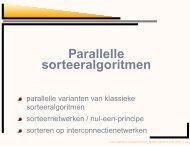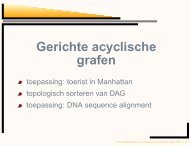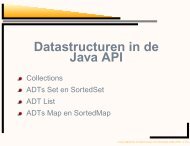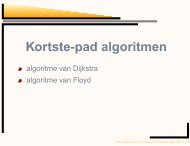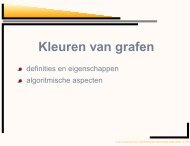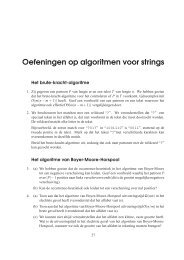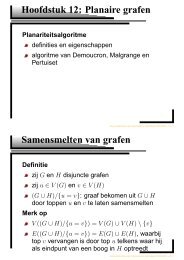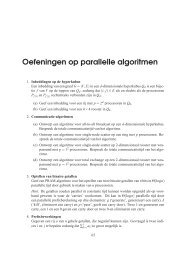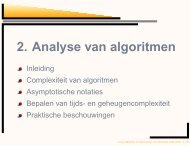Here - Combinatorial algorithms and algorithmic graph theory
Here - Combinatorial algorithms and algorithmic graph theory
Here - Combinatorial algorithms and algorithmic graph theory
Create successful ePaper yourself
Turn your PDF publications into a flip-book with our unique Google optimized e-Paper software.
22 Generation of cubic <strong>graph</strong>s<br />
2. G contains no reducible lollipops, but contains at least one reducible nonadjacent<br />
edge diamond.<br />
The proof is completely analogous to the proof of 1.<br />
3. G contains no reducible lollipops <strong>and</strong> no reducible non-adjacent edge diamonds,<br />
but at least one reducible edge diamond.<br />
The proof is completely analogous to the proof of 1.<br />
Proof of part 2. Assume that all prime <strong>graph</strong>s with less than n vertices<br />
(n > 4) are generated at most once by the algorithm.<br />
Suppose that the algorithm generated two isomorphic prime <strong>graph</strong>s G <strong>and</strong> G ′<br />
with n vertices which are both accepted by the algorithm. The following cases<br />
can occur:<br />
1. G contains at least one reducible lollipop.<br />
In this case G <strong>and</strong> G ′ were constructed by a lollipop insertion operation. So<br />
we apply the canonical reduction to G <strong>and</strong> G ′ <strong>and</strong> call the reduced <strong>graph</strong>s<br />
p(G) <strong>and</strong> p(G ′ ) respectively. It follows from Lemma 2.2 that p(G) <strong>and</strong><br />
p(G ′ ) are prime. Suppose the lollipop l was reduced in G <strong>and</strong> the lollipop<br />
l ′ in G ′ <strong>and</strong> let γ be an isomorphism from G to G ′ . Since l <strong>and</strong> l ′ are both<br />
canonical reducible lollipops, γ(l) is in the same orbit as l ′ under the action<br />
of Aut(G ′ ), so p(G) ∼ = p(G ′ ). By induction p(G) = p(G ′ ).<br />
Suppose that G was constructed from p(G) by applying the lollipop insertion<br />
operation to the edge e of p(G) <strong>and</strong> that G ′ was obtained by applying<br />
the lollipop insertion operation to edge e ′ . But restricting the isomorphism<br />
γ (that maps l to l ′ ) to the vertices that already belonged to p(G) gives<br />
an automorphism of p(G) mapping e to e ′ , showing that they were in the<br />
same orbit of Aut(p(G)), contrary to our procedure.<br />
2. G contains no reducible lollipops, but contains at least one reducible nonadjacent<br />
edge diamond.<br />
The proof is completely analogous to the proof of 1.<br />
3. G contains no reducible lollipops <strong>and</strong> no reducible non-adjacent edge diamonds,<br />
but at least one reducible edge diamond.<br />
The proof is completely analogous to the proof of 1.



